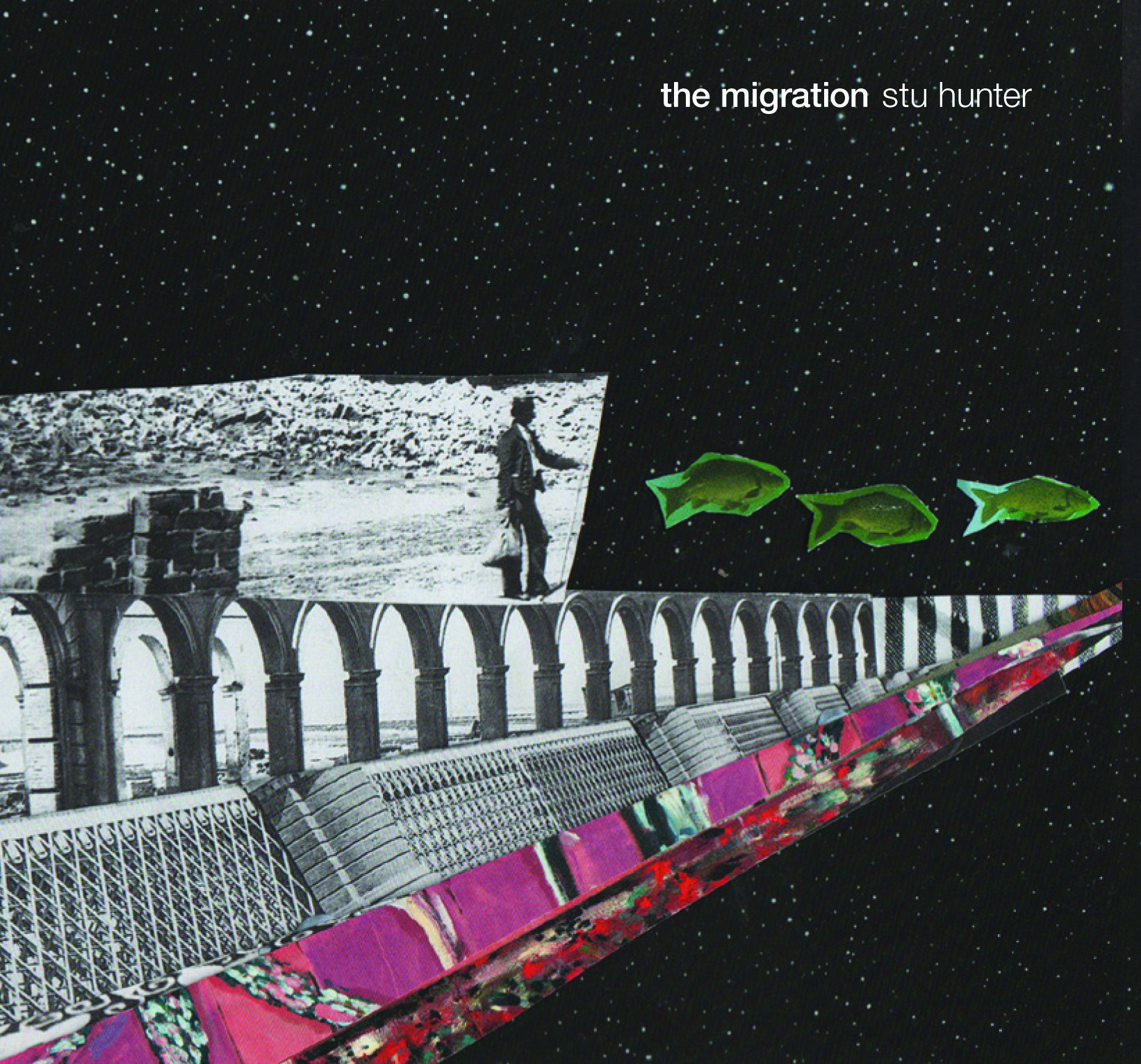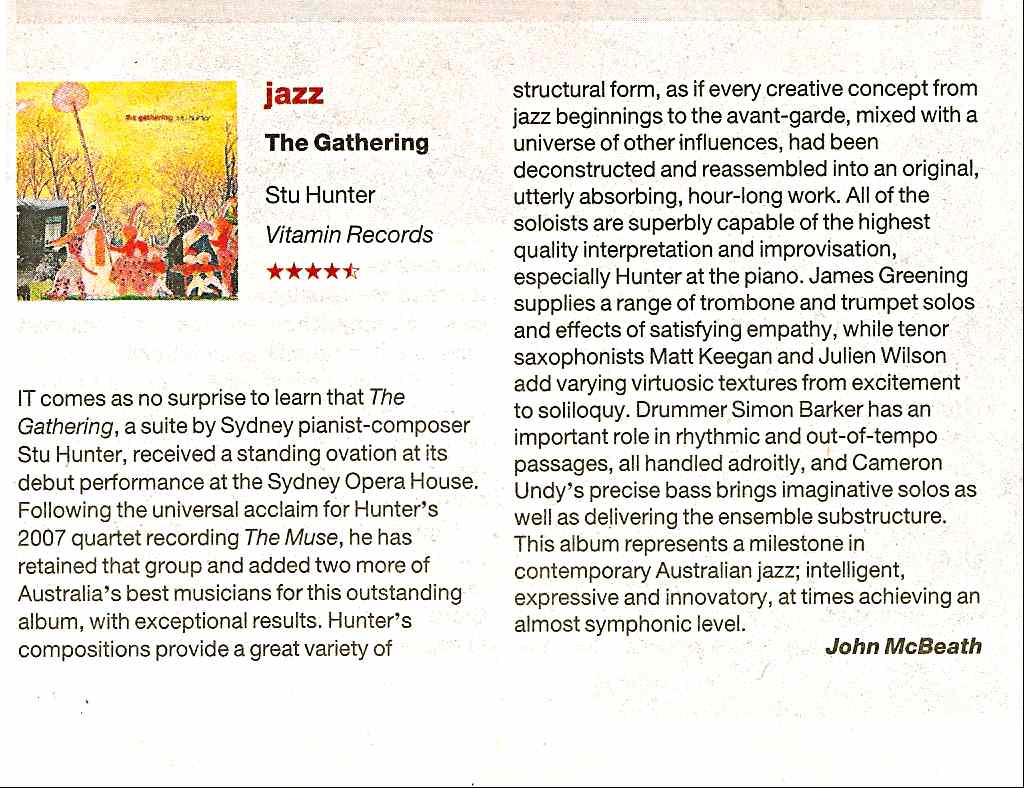the migration - suite - Stu Hunter
OUT NOW on Bandcamp iTunes & Spotify
For a link to the migration EPK - please email ashlie hunter for a media pass - ashpellow@hotmail.com
Cover Ashlie Hunter
the gathering - suite
Cover - Ashlie Hunter
the muse - suite
Cover - Brett Whitely Sunday (detail)
Berlin - Symphony of a Great City vs Stu Hunter
“Even mix of refrains, trains and automobiles
Reviewed by John Shand
September 6, 2011
Performer
Stu Hunter and Berlin: Symphony of a Great city
BERLIN: SYMPHONY OF A GREAT CITY/STU HUNTER
Art Gallery of NSW, September 2
FILMS and live music often share an uneasy relationship. The eye tends to dominate the ear even when image is intended to be secondary.
When a revered silent film such as Walter Ruttmann’s Berlin: Symphony of a Great City lines up with an exceptional improvising ensemble, what should the relationship be? For Ruttmann’s 1927 masterpiece, he and four cinematographers spent a year filming Berlin’s teeming life, shaping it into a single day. Hidden cameras and natural light allowed for candid shots of Berliners commuting, working, dining, playing, courting, drinking and dancing.
Stu Hunter did not confine his score to a subservient role. Music from his two brilliant jazz suites, The Muse and The Gathering (plus some new material), became a counterpoint rather than a mere adjunct. It was realised by Hunter (piano), James Greening (trombone, pocket trumpet), Julien Wilson (tenor saxophone), Matt Keegan (tenor saxophone), Cameron Undy (bass) and Simon Barker (drums).
Hunter dismembered his suites to suit the film but did not try to underscore images frame by frame. Apart from other considerations, the editing pace is often too rapid for it to be viable: the music would be grotesquely fussy. But individual improvisers did catch specific action.
Overall, Hunter created an almost perfect balance between the power and weight of sound and image. The music was consistently of concert strength yet the film was not swamped, and nor did it dominate the music. A coherent musical narrative emerged that complemented the film.
The more propulsive music married particularly well with Ruttmann’s infatuation with trains, trams and traffic. He called his film a ‘’symphony’’ because of its scale and scope, and Hunter’s music matched this in its range of mood, texture, dynamics, tempos and intensity. The only option under-exploited was a powerful one: silence.
”
































